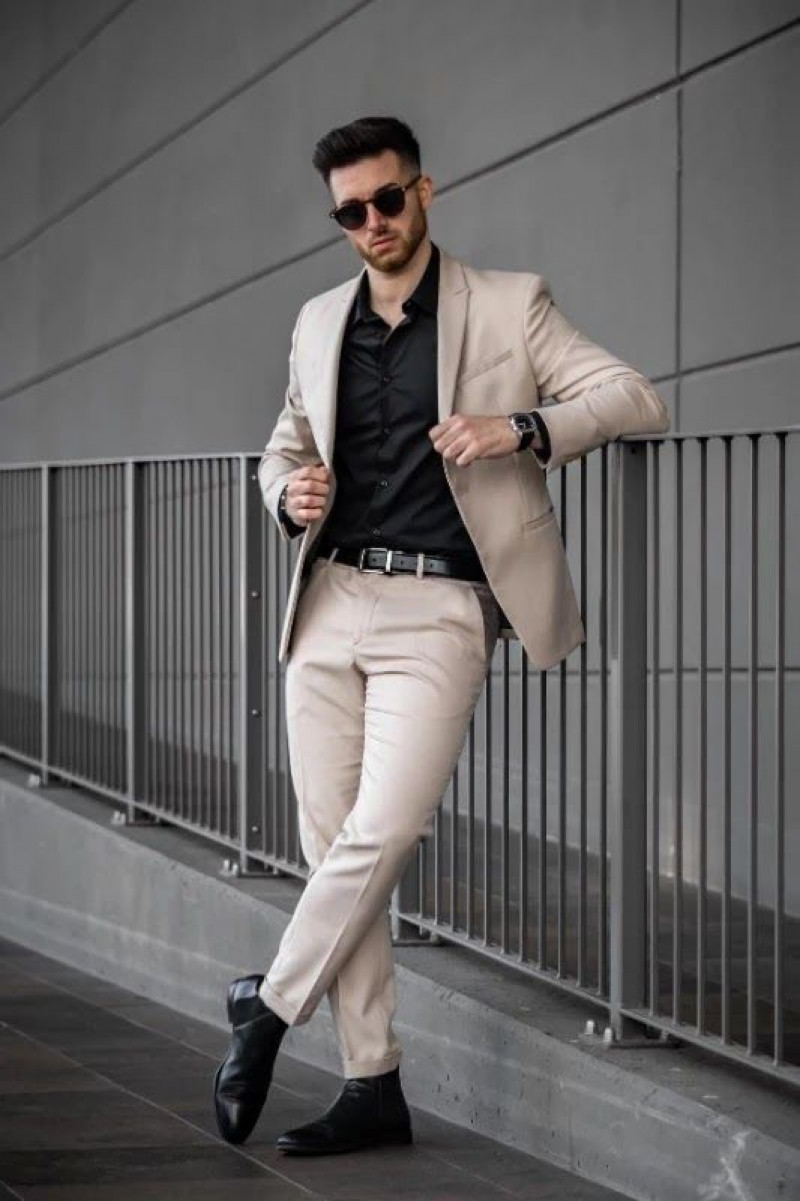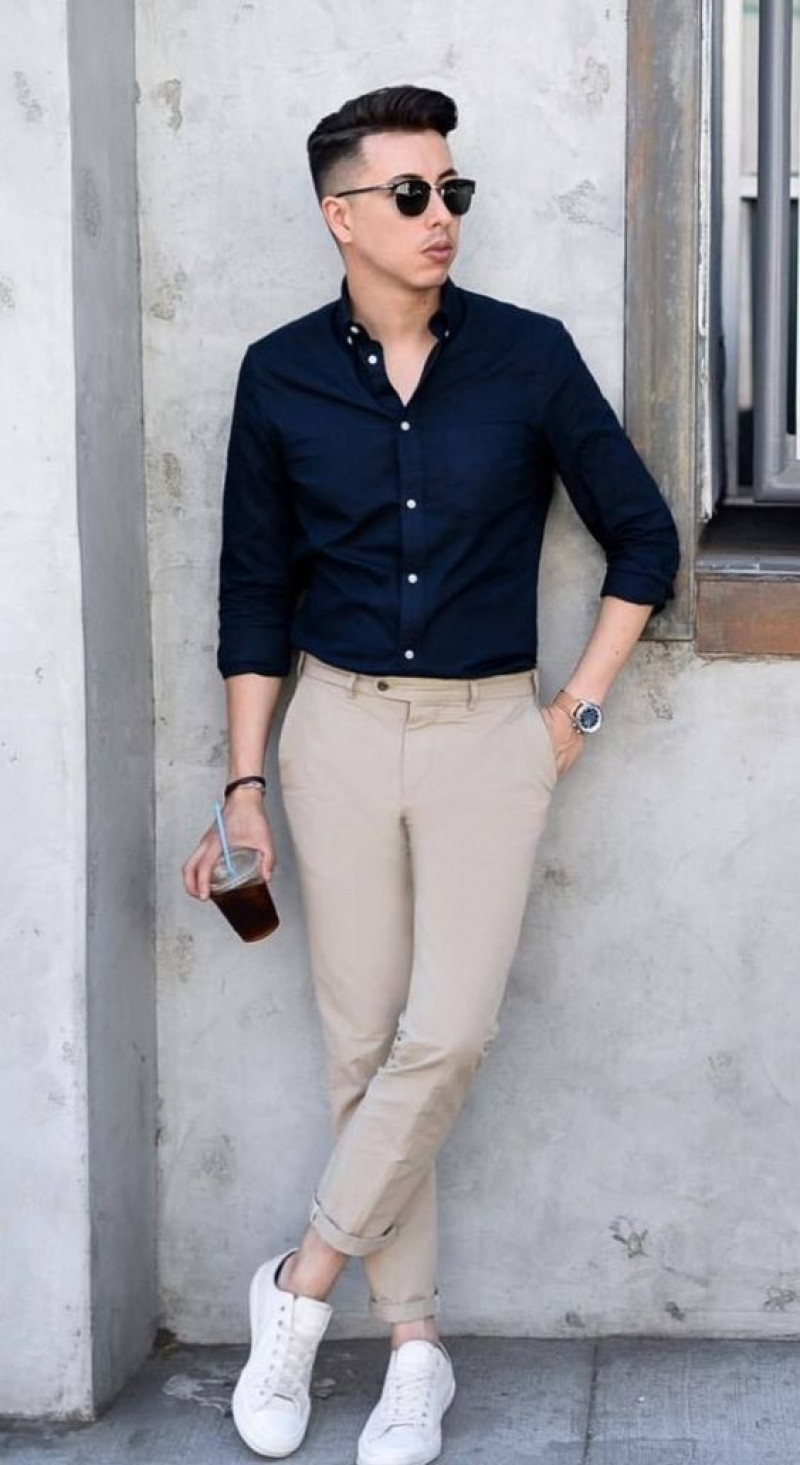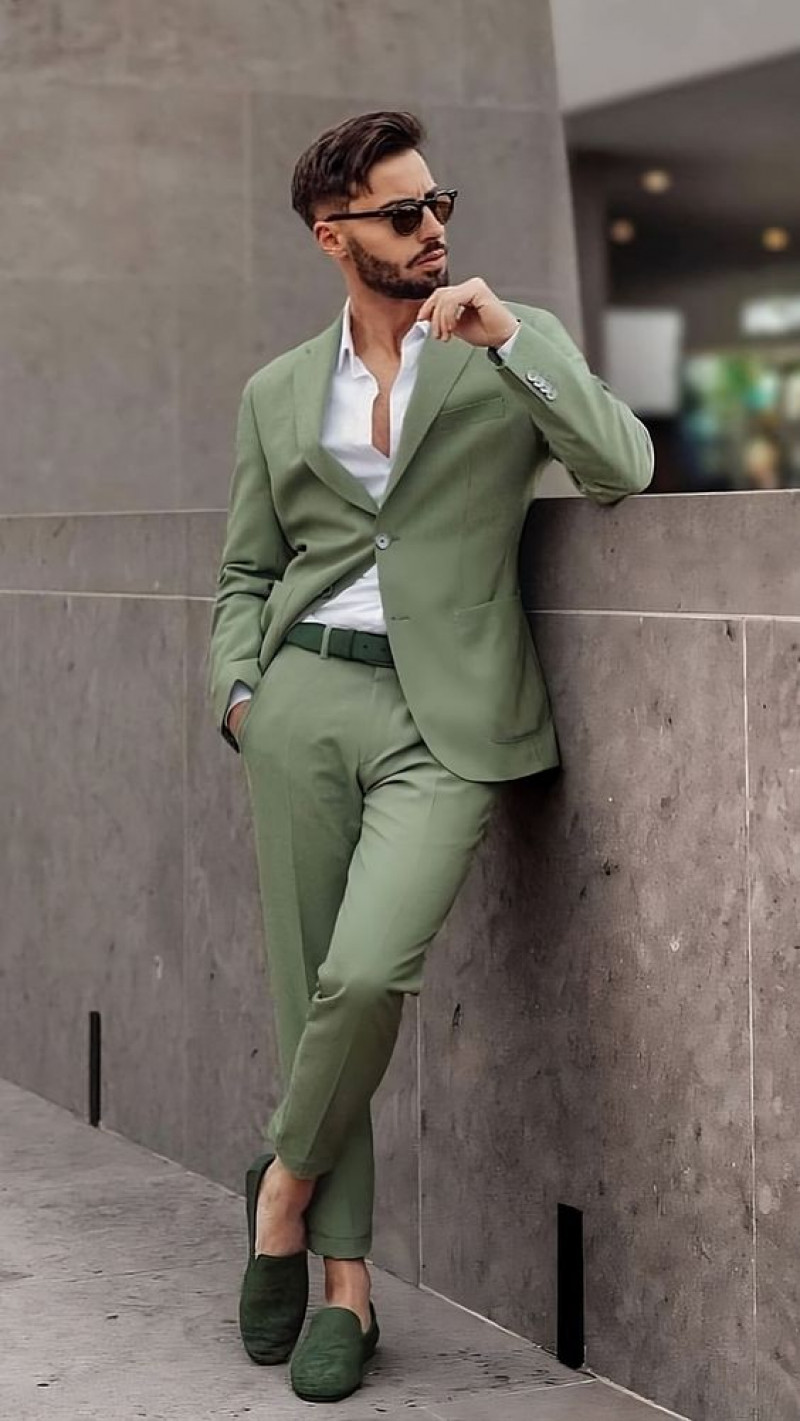Stepping into an important event, you know, like a fancy party or a big work gathering, can feel a bit much if you are not sure what to wear. You want to look good, feel good, and pretty much fit right in. That's where understanding formal dress for men comes into play. It is not just about putting on any old suit; it is actually about knowing the specific codes and what each one means for your overall appearance. This guide is here to help you figure out how to dress with real confidence, making sure you always show up looking sharp and appropriate.
For many guys, the thought of formal wear can bring up questions. What is the real difference between a tuxedo and a regular suit? When do you wear a bow tie versus a necktie? And how do you make sure your outfit truly fits well? These are all very common thoughts, and honestly, getting these details right can make all the difference. We will explore the different kinds of formal attire, so you can pick the perfect look for any occasion that comes your way.
Discovering the art of formal dress for men is about more than just following rules; it is about finding ways to express yourself while still respecting the event's vibe. From the very classic suits to the more specific tuxedos, we will get into the world of smart clothing choices and the rules that go with them. You see, formal outfits are not streetwear that you can style in any way you want. When you are dressing for work and formal events, you have to dress smart, which means baggy clothes are off the table. This guide will show you how to dress for these moments without making any kind of misstep.
Table of Contents
- Understanding Formal Dress Codes
- The Importance of Fit and Detail
- Beyond the Basics: Precision and Polish
- When a Suit is Not Enough
- Frequently Asked Questions
Understanding Formal Dress Codes
A formal dress code usually refers to black tie, requiring men to wear tuxedos, dress shirts, and dress shoes. This is perhaps the most common formal invitation you will receive, so it is really important to get it right. Knowing what each code means helps you pick out the right clothes without any guesswork. Formal attire spans white tie, black tie, and morning dress codes, with each having specific rules. We will show you how to dress for them without falling foul of any expectations, you know, so you can feel good.
Black Tie Essentials
When an invitation says "black tie," it means a specific look that is very polished and quite classic. This code asks for a tuxedo, which is distinct from a regular business suit. A tuxedo usually has satin lapels, often in a peak or shawl style, and matching satin stripes down the side of the trousers. It is a bit more special, you see, for evening events.
With your tuxedo, you need a crisp dress shirt. This shirt is typically white, and it often features pleats down the front and French cuffs, which are meant for cufflinks. The collar might be a wing-tip or a spread collar, depending on your preference and the overall look you are going for. It is very much about these smaller details.
To complete the look, a bow tie is absolutely necessary for black tie. While pre-tied bow ties exist, a self-tied one always looks, well, a bit more authentic and shows a certain skill. The bow tie should be black, made of silk, or a similar luxurious fabric. And for your feet, dress shoes are key. Patent leather oxfords are the traditional choice, polished to a high shine. They really complete the whole picture, you know, making sure everything looks put together.
White Tie: The Pinnacle of Formality
White tie is the most formal dress code there is, reserved for very special occasions like state dinners or grand galas. It is, like, a whole different level of dressing up. For white tie, men wear a black tailcoat, which is a jacket with a distinct cutaway front and two long tails at the back. This coat is always worn unbuttoned.
Underneath the tailcoat, you will find a white pique vest. This vest is usually double-breasted and should be worn so it does not extend below the front of the tailcoat. The shirt for white tie is also white, featuring a stiff front and a wing collar, designed specifically to accommodate the white bow tie. This bow tie, in white pique, is always self-tied. It is quite a specific look, really.
Trousers for white tie are black, plain, and have two satin stripes down the side. They are worn without cuffs. For shoes, highly polished black patent leather dress shoes are the standard. Accessories might include white gloves, a white pocket square, and a dress watch. It is a very, very traditional look, and every piece has its place.
Morning Dress: Daytime Elegance
Morning dress is the formal daytime equivalent of white tie, often seen at weddings, royal events, or very formal daytime gatherings. It is a bit different from evening wear, naturally. The main piece is the morning coat, which is a black or grey coat with a curved front that slopes back into a single tail. It is a rather unique shape.
With the morning coat, men typically wear striped trousers, often grey and black, though sometimes plain grey trousers are acceptable. A waistcoat is also part of the outfit, usually in a buff, grey, or light blue color. This waistcoat can be single or double-breasted. For the shirt, a white or light-colored dress shirt is common, with a stiff collar.
Instead of a bow tie, morning dress calls for a formal necktie or a cravat, often in a patterned silk. The shoes are usually black leather oxfords, polished well. A top hat is traditionally worn with morning dress, though it is often carried rather than worn indoors. It is, in a way, a very charming and old-world kind of formal attire.
The Importance of Fit and Detail
No matter which formal dress code you are following, the fit of your clothes is absolutely paramount. A perfectly chosen outfit can look less than stellar if it does not fit your body just right. This is where the magic happens, you know, in how the fabric drapes and moves with you. The best formal wear for men should offer freedom of movement and a silhouette that flatters your build, allowing you to stand tall and feel your best.
Getting the Right Fit
When we talk about fit, it means the suit jacket should sit comfortably on your shoulders, not too tight and not too loose. The sleeves should end right at your wrist bone, allowing about a quarter to half an inch of your shirt cuff to show. Trousers should have a clean line, with just a slight break over your shoes, or no break at all for a very modern look. Baggy clothes are off the table when dressing for formal events; it is all about clean lines and smartness.
A good fit makes a huge difference in how you carry yourself. It allows you to move freely, to sit down, and to stand up without feeling restricted. This comfort, honestly, translates into confidence. If your clothes feel good, you will naturally look more at ease and in control. So, investing in tailoring, even for an off-the-rack suit, is a very smart move.
Consider the overall shape the clothes create on your body. A well-fitted jacket will give you a pleasing silhouette, making you look taller and more put together. It is not about being skin-tight; it is about being just right, allowing for that freedom of movement while still looking sharp. This attention to how the clothes sit on your frame is, like, a key part of looking your absolute best.
Attention to Accessories
Accessories are the finishing touches that really bring a formal outfit together. They are not just add-ons; they are crucial elements that show your attention to detail and, in a way, your personality. For instance, cufflinks are a must with French cuff shirts. They can be simple and classic or have a bit more flair, depending on your taste. A nice pair of cufflinks can really elevate the whole look.
A dress watch is another important accessory. It should be sleek and understated, not too bulky or sporty. The idea is to complement the formal attire, not to stand out too much. A slim watch with a leather strap or a simple metal bracelet is usually the best choice. It adds a touch of sophistication, you know, without being flashy.
Other accessories, like a pocket square, can add a subtle pop of color or texture. For black tie, a crisp white linen or silk pocket square is traditional. For other formal events, you might try a lighter colored suit, or a blazer, and then a patterned silk pocket square could work nicely. It is about adding polish and personality without going overboard. Even the choice of socks matters; they should always match your trousers or shoes and be long enough so no skin shows when you sit down. These small details, actually, make a big impact.
Beyond the Basics: Precision and Polish
When entering a formal environment, a suit is not enough. It is true, you know, that simply wearing a suit does not automatically make you look formal. There is a deeper level to it. You have to show precision, polish, and personality. Precision means every element of your outfit is chosen with care and fits perfectly. Polish refers to the immaculate condition of your clothes and shoes – no wrinkles, no scuffs, everything gleaming.
Personality comes through in the subtle ways you make the outfit your own, perhaps through a unique pair of cufflinks or the way you tie your bow tie. It is about making the formal attire feel like an extension of you, rather than just a uniform. This balance of adherence to rules and personal expression is what truly sets a well-dressed man apart. It is quite a skill, really.
Think about the fabric quality, the stitching, and the way the garment feels. These elements contribute to the overall impression of polish. A suit made from good wool will drape better and look more refined than one made from a cheaper blend. The way you carry yourself, too, plays a big part. Standing tall and moving with purpose complements a precise and polished look. It is, like, the complete package.
When a Suit is Not Enough
There are times when a standard business suit, even a very good one, just will not cut it for a truly formal event. This is where understanding the specific dress codes, like white tie or black tie, becomes essential. These events call for very particular garments that go beyond the everyday suit. For instance, a tuxedo is a distinct garment with its own set of rules, different from a typical suit jacket and trousers.
For some daytime formal events, morning dress is required, which includes a morning coat and striped trousers – again, not a standard suit. These specific formal outfits are not streetwear that you can style in any way you want. They have established traditions and expectations. Ignoring these can lead to feeling out of place, or, you know, a bit awkward.
The goal is to show respect for the occasion and the hosts. This means recognizing that "formal" is a broad term that includes several distinct categories. From classic suits to tuxedos, delve into the world of sartorial expression and style rules. Knowing when to wear what, and how to wear it well, is a mark of true understanding and confidence. It is really about dressing smart, which means baggy clothes are off the table and precision is key. For more insights on men's fashion, you might want to check out this article on men's style.
Frequently Asked Questions
What is the main difference between a tuxedo and a suit?
A tuxedo usually has satin lapels, often in a peak or shawl style, and matching satin stripes down the side of the trousers. It is worn with a bow tie, a specific dress shirt, and patent leather shoes. A suit, on the other hand, is made from the same fabric throughout, including the lapels, and is typically worn with a long necktie and dress shoes that are not necessarily patent leather. Tuxedos are generally for evening formal events, while suits are more versatile for both day and evening business or semi-formal occasions.
Can I wear a regular black suit instead of a tuxedo for a black tie event?
While a very dark, well-fitted suit might be acceptable in some less strict "black tie optional" situations, for a true black tie event, a tuxedo is really the expected attire. A suit simply does not carry the same level of formality or distinction as a tuxedo. It is about respecting the specific dress code set by the event, you know, to avoid looking underdressed.
What are the key accessories for formal dress for men?
Key accessories for formal dress include bow ties (especially for black tie), cufflinks for French cuff shirts, and a sleek dress watch. A pocket square can also add a touch of polish. For morning dress, a cravat or specific formal necktie is worn. These accessories are chosen to complement the formal attire and add to the overall refined look, rather than to stand out too much. They are, like, the final touches that pull everything together.



Detail Author:
- Name : Kenneth Marvin
- Username : orath
- Email : deanna.bogisich@fritsch.biz
- Birthdate : 1994-09-12
- Address : 42084 Richie Lodge Apt. 501 Lake Clarabellebury, MO 38189-4650
- Phone : 813.612.7196
- Company : Tremblay Inc
- Job : Coil Winders
- Bio : Aut nihil repellat vel sed. Sint quos deleniti et et maxime. Eius inventore quisquam qui velit consectetur. Accusamus voluptate nobis unde tempora reiciendis. Et in rem quos iusto corporis non sunt.
Socials
twitter:
- url : https://twitter.com/todhodkiewicz
- username : todhodkiewicz
- bio : In reiciendis voluptatem error aut cupiditate temporibus qui. Quasi esse ea et consectetur molestiae magnam sit error. Maiores labore at eum atque.
- followers : 2466
- following : 112
linkedin:
- url : https://linkedin.com/in/hodkiewiczt
- username : hodkiewiczt
- bio : Itaque sint nemo earum sequi eos aut accusantium.
- followers : 4701
- following : 1970



























